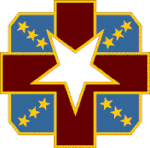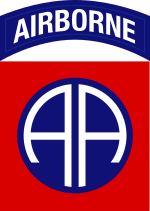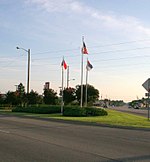Fort Liberty

Fort Liberty, formerly Fort Bragg, is a military installation of the United States Army in North Carolina, and is one of the largest military installations in the world by population, with over 52,000 military personnel. The military reservation is located within Cumberland and Hoke counties, and borders the towns of Fayetteville, Spring Lake, and Southern Pines. Fort Liberty covers over 251 square miles (650 km2). It is the home of the Army's XVIII Airborne Corps and is the headquarters of the United States Army Special Operations Command, which oversees the U.S. Army 1st Special Forces Command (Airborne) and 75th Ranger Regiment. It is also home to the U.S. Army Forces Command, U.S. Army Reserve Command, and Womack Army Medical Center. Fort Liberty maintains two airfields: Pope Field, where the United States Air Force stations global airlift and special operations assets as well as the Air Force Combat Control School, and Simmons Army Airfield, where Army aviation units support the needs of airborne and special operations forces on post.
Excerpt from the Wikipedia article Fort Liberty (License: CC BY-SA 3.0, Authors, Images).Fort Liberty
Normandy Drive,
Geographical coordinates (GPS) Address Nearby Places Show on map
Geographical coordinates (GPS)
| Latitude | Longitude |
|---|---|
| N 35.139166666667 ° | E -78.999166666667 ° |
Address
Normandy Drive
Normandy Drive
28307
North Carolina, United States
Open on Google Maps






